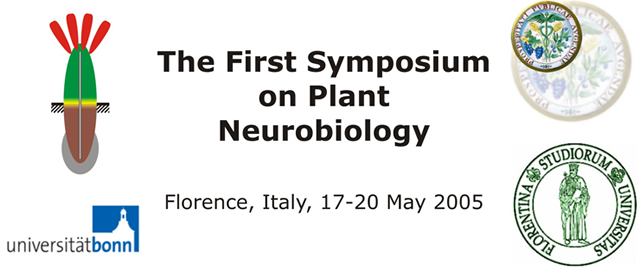|
Introduction: Circumnutation is a
revolving movement of elongating cylindrical plant organs such as stems, hypocotyls, tendrils and roots. It is
the consequence of helical growth and reversible volume variations occurring in the cells of the moving part
of the organ (the bending zone below the apex). The bending is caused by the difference in the water content
and cell volume between the convex and concave sides of the bending zone, associated with turgor and ion
concentration differences between opposite sides of the stem. It is proposed that turgor changes are generated
by endogenous, spontaneous oscillations. As a consequence oscillatory growth and movement are generated. We
aimed to compare the rhythmicity of circumnutation in sunflower with regard to the trajectory length, period,
shape and surface area of individual nutations in different photoperiod conditions.
Material and
Methods: Measurements lasting about 7 weeks were executing using a picture analysis system. Variable
photoperiods – a 24h photoperiod (LD 16:8 followed by LL), a 30h photoperiod (LD 20:10 followed by LL
and again by LD 20:10) and a 16h photoperiod (LD 8:8 followed by LL) were applied. In order to determine
whether a periodicity of circumnutation parameters existed or not, the data were processed by the Fourier
spectral analysis and the wavelet analysis.
Results and conclusions: We found that all parameters
revealed a beautiful daily modulation in each LD condition applied. After LD-LL transition, the parameters
were gradually loosing their modulation. In the transient phase (about 7 days after LD-LL transition) the
rhythms of the circumnutation parameters turned out to be close to 24h in the 24h photoperiod as well as in
the 30h and 16h photoperiod. These findings suggest the possibility for circumnutation of being circadian
regulated. After the LL-LD transition the rhythms regained their daily modulation after one night. These
findings strongly support the view that circumnutation in sunflower, widely known as an ultradian rhythm, also
possesses daily modulations of its intensity and it can tune in a wide range to the frequency of
environment.
- Buda A, Zawadzki T, Krupa M, Stolarz M, Okulski W. 2003. Daily
and infradian rhythms of circumnutation intensity in Helianthus annuus L. Physiol Plant 119:
582-589
- Caré AF, Nefed’ev L, Bonnet B, Millet B, Badot PM. 1998. Cell
elongation and revolving movement in Phaseoulus vulgaris L. twining shoots. Plant Cell Physiol 39:
914-921.
|

